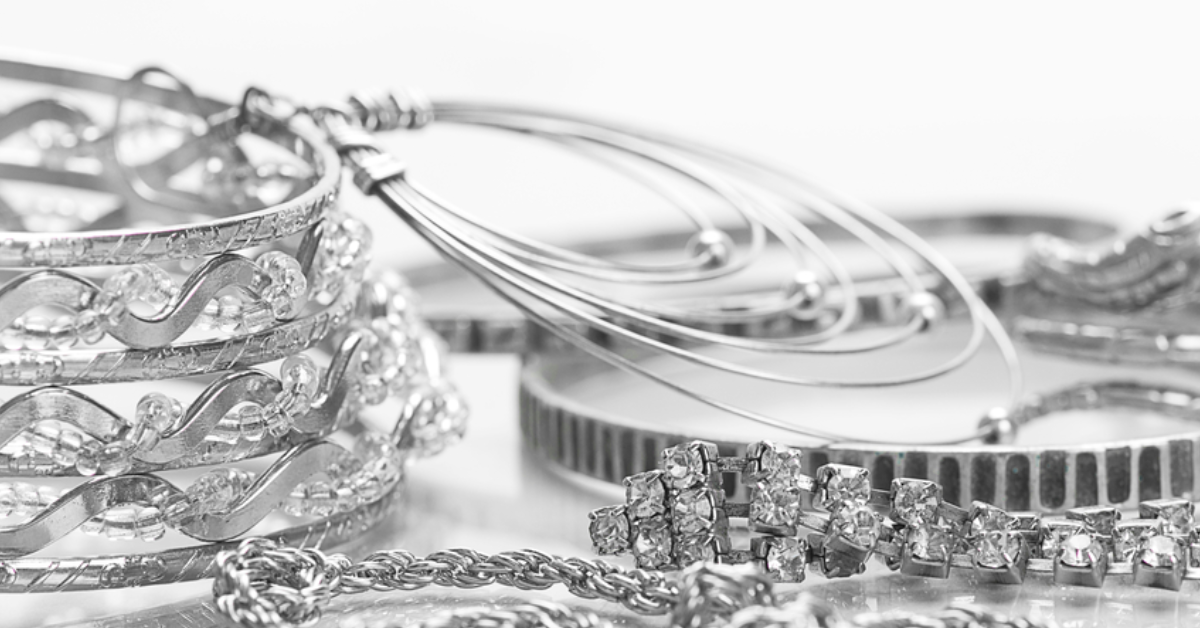Silver has been valued for thousands of years. From jewellery to coins and even investment, silver is one of the most popular precious metals in the world. But not all silver is the same. When buying a silver ring, necklace, bracelet, or even silver bars, it is important to understand the different types of silver and which one suits your needs. This guide will explain the main types of silver, which is best for jewellery, which is best for investing, and what to look for when buying.
The Different Types of Silver
There are several forms of silver used around the world. Each has its own mix of purity, strength, and purpose.
Fine Silver (99.9% Pure)
Fine silver is almost pure, at 99.9% silver content. It is very soft, which makes it less durable for jewellery. However, it is perfect for silver bars, coins, and collectors’ items. According to the London Bullion Market Association (LBMA), fine silver is the standard for global silver trading.
Sterling Silver (92.5% Silver, 7.5% Alloy)
Sterling silver is the most common type for jewellery. It contains 92.5% silver and 7.5% alloy, usually copper. This makes it stronger and less likely to bend or scratch. Reports from the Silver Institute show that over 70% of silver jewellery worldwide is made from sterling silver.
Argentium Silver
Argentium is a newer form of silver, with a purity of either 93.5% or 96%. It has added germanium, which makes it more resistant to tarnish. Many jewellers consider it a modern upgrade to sterling silver.
Coin Silver (90% Silver, 10% Copper)
Coin silver was once used in US coins. Today, it is less common, but still found in antique jewellery and silverware.
Silver Plated
Silver-plated jewellery is made by covering a base metal with a thin layer of silver. It looks like real silver but wears off over time. Because of this, it is cheap but not long-lasting.
Nickel Silver (Contains No Silver)
Nickel silver, despite its name, does not contain any silver at all. It is a mix of nickel, copper, and zinc. It is often used for costume jewellery but has no real silver value.
Which is the Best for Jewellery?
When it comes to jewellery, sterling silver is the best choice. It is strong, affordable, and widely available. Sterling silver rings, necklaces, and bracelets last longer than fine silver and are easier to care for.
Argentium silver is also excellent for jewellery because it resists tarnish better than sterling. However, it is often more expensive and less common in stores.
In a survey by the Jewellery Retail Association, 78% of customers preferred sterling silver for daily wear, while only 12% chose fine silver jewellery due to its softness.
Which is the Best for Investing?
For investment, fine silver (99.9%) is the standard. This is the type of silver used in bars and coins sold by trusted dealers. Fine silver holds the highest resale value because it is pure.
The World Silver Survey found that global silver investment demand rose by 22% in 2022, with most buyers choosing fine silver bars and coins. Sterling silver, on the other hand, is not used for investment because of its alloy content.
If your goal is to store wealth, choose fine silver bars or coins with a stamp showing purity and weight.
What to Buy Each Type of Jewellery?
-
Rings: Best in sterling silver or Argentium for durability. Fine silver rings can bend too easily.
-
Necklaces: Sterling silver is ideal. It is strong and keeps its shine with care.
-
Bracelets: Sterling or Argentium work best, as they resist scratches from daily wear.
-
Earrings: Sterling silver is most common, but fine silver can be used for special designs.
-
Watches and accessories: Often sterling silver because of its balance of strength and beauty.
For budget buyers, silver-plated jewellery is an option, but it is better to invest in sterling for long-term use.
Conclusion
Silver is one of the most loved metals in the world, but not all silver is the same. Fine silver is best for investment because of its purity, while sterling silver is the best for jewellery because it is durable and affordable. Argentium silver is a modern choice for those who want jewellery that resists tarnish.
When choosing silver, think about what you need: jewellery for daily wear, or silver as an investment. Understanding the types of silver will help you make the best choice for style, durability, and value.
FAQ’S
Is sterling silver real silver?
Yes, sterling silver is 92.5% pure silver mixed with alloy for strength.
Does fine silver tarnish?
Yes, but slower than sterling silver.
What silver is most valuable?
Fine silver (99.9%) is most valuable for investment.
Is silver-plated jewellery worth buying?
It is affordable but does not last as long as sterling silver.
What is the strongest type of silver for jewellery?
Sterling silver and Argentium are the strongest for everyday wear.
